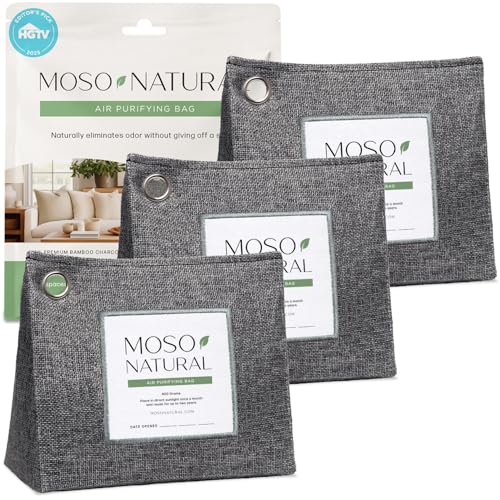
Yes, sweet potatoes can be a nutritious addition to your canine’s diet. Rich in vitamins A, C, and B6, as well as fibre, these tubers offer various health benefits. However, moderation is key. Overfeeding any new food can lead to digestive issues, so always introduce it gradually.
When preparing these tasty treats, ensure they are cooked thoroughly and served plain. Avoid adding butter, sugar, or spices, as these can be harmful to your furry friend. I recall the first time I shared a small piece of sweet potato with my pup; he absolutely loved it! It was a delightful moment, seeing him enjoy something healthy.
Consulting with a veterinarian is wise before integrating new foods into your pet’s meals. They can provide tailored advice based on your canine’s specific health needs. Always prioritising safety will ensure your beloved companion stays happy and healthy.
Are Yams Safe for Dogs
Yes, these tubers can be a healthy addition to your canine’s diet when prepared properly. They offer several nutrients, including vitamins A and C, potassium, and dietary fibre. However, moderation is key.
When introducing new foods, always monitor your pet for any adverse reactions. Cook them thoroughly, as raw versions may be hard for your furry friend to digest. Avoid adding seasonings, butter, or oils, which can upset their stomach.
Here’s a simple breakdown of how to include these in your dog’s meals:
| Preparation Method | Benefits | Potential Concerns |
|---|---|---|
| Boiled | Soft texture, easy to digest | Overcooking may reduce nutrients |
| Baked | Retains flavour and nutrients | Ensure no added ingredients |
| Mashed | Good for mixing with other foods | Watch for added dairy |
Always consult your vet before making significant changes to your companion’s diet. Each pet has unique dietary needs, and your veterinarian can provide tailored advice. Regularly assess how your canine responds to new foods to ensure their health remains a priority.
Nutritional Benefits of Yams for Canines
Incorporating this tuber into your pet’s diet can provide numerous health advantages. Rich in dietary fibre, it helps promote healthy digestion, reducing the risk of constipation. This feature is particularly beneficial for canines prone to gastrointestinal issues.
High levels of vitamins A and C contribute to a robust immune system, helping your furry friend fend off common illnesses. Vitamin A supports vision and skin health, while vitamin C acts as an antioxidant, combating free radicals in the body.
Additionally, this root vegetable contains potassium, which aids in muscle function and maintaining a healthy heart. The natural sugars present offer a quick energy boost, making it an excellent option for active pets. Just ensure that the portions are appropriate to avoid excess caloric intake.
For those with canines sensitive to certain ingredients, exploring options like best anti allergic dog food can complement a diet including this nutritious food. Overall, the inclusion of this tuber can enhance your pet’s overall well-being when prepared correctly and served in moderation.
Potential Risks of Feeding Yams to Dogs
Introducing this root vegetable into a canine diet can lead to some issues if not done cautiously. One major concern is the potential for gastrointestinal upset. Some pets may experience bloating, gas, or diarrhoea after consuming it, particularly if they are not accustomed to new foods.
Allergic Reactions
While rare, some animals could be allergic to this food. Signs of an adverse reaction might include itching, swelling, or digestive distress. If a pet displays any of these symptoms after tasting it, immediate veterinary advice is crucial.
Preparation Hazards
Cooking methods also matter. Raw versions can be difficult to digest, leading to stomach discomfort. Moreover, adding seasonings or sauces, especially those containing garlic or onion, can pose additional health risks, as these ingredients are toxic to pets. Always ensure this root is cooked plainly and cut into manageable pieces.
Lastly, moderation is key. Overindulgence may lead to obesity or other health concerns, particularly in less active breeds. Always consult a vet before introducing new items to a pet’s meal plan to ensure a balanced and safe diet.
How to Prepare Yams for Your Dog
Peeling and cooking these tubers is a straightforward process. Begin by selecting fresh, firm specimens. Slice off both ends, then carefully remove the skin using a sharp knife or vegetable peeler. This step is crucial, as the skin may contain compounds that aren’t suitable for your pet’s consumption.
Next, chop the flesh into small, manageable pieces. This size helps with even cooking and makes it easier for your furry friend to enjoy. Boiling or steaming is the best method for preparation. Boil in unsalted water for about 20-30 minutes or steam for around 15-20 minutes until tender. Ensure that they are cooked thoroughly; undercooked pieces can cause digestive distress.
Once cooked, drain any excess water and allow them to cool down. You can mash the pieces with a fork for a softer texture, or serve them whole, depending on your companion’s preference. Avoid adding any seasonings, oils, or butter, as these can be harmful.
Introduce these treats gradually into your pet’s diet. Start with a small portion to observe how they react. If there are no adverse effects, you can continue to add them to meals occasionally. This approach helps to ensure that their digestive system adjusts without issues.
Storing any leftovers is simple; place them in an airtight container in the fridge for up to three days. Reheat gently before serving, ensuring they are not too hot for your beloved companion.
Signs of Yam Allergy or Intolerance in Canines
Observing your furry companion for any unusual reactions after introducing new foods is crucial. If you suspect an intolerance or allergy to tubers, watch for these signs:
Gastrointestinal Distress: Symptoms such as vomiting, diarrhoea, or excessive gas may indicate a negative reaction. Monitor their stool consistency and any changes in eating habits.
Skin Reactions: Redness, itching, or inflammation of the skin could suggest an allergy. Pay attention to areas like the paws, ears, or belly, as these are common spots for allergic reactions.
Behavioural Changes: If your pet seems more lethargic, irritable, or anxious than usual, it might be a sign of discomfort. Keeping a close eye on their mood can help identify potential issues.
Respiratory Symptoms: Coughing, sneezing, or difficulty breathing may occur in severe cases. Any signs of respiratory distress warrant immediate veterinary attention.
If you notice any of these symptoms, discontinue feeding tubers and consult a veterinarian to determine the best course of action. Early intervention can prevent further complications and ensure your furry friend remains happy and healthy.
Recommended Serving Sizes of Yams for Dogs
Start with small portions. A good rule of thumb is to offer no more than 10% of your furry friend’s daily caloric intake from treats, including these tubers. For most canines, this translates to about a tablespoon or two of cooked, mashed or cubed varieties.
Serving Guidelines
- Small breeds (up to 10 kg): 1 tablespoon per serving.
- Medium breeds (10-25 kg): 2 tablespoons per serving.
- Large breeds (25-40 kg): 3-4 tablespoons per serving.
- Giant breeds (over 40 kg): ½ cup per serving.
Always introduce new foods gradually. Start with a small amount to observe any adverse reactions. If your pet shows no signs of discomfort, you can slowly increase the portion size.
Frequency of Feeding
- Offer once or twice a week as an addition to regular meals.
- Do not exceed recommended portions to avoid digestive upset.
Keep in mind, every canine is unique. Monitor their response and adjust accordingly. Regular vet check-ups can help ensure their diet remains balanced and suitable for their health needs.
FAQ:
Are yams safe for dogs to eat?
Yams can be safe for dogs when prepared properly. They are a good source of vitamins and minerals, but it’s important to ensure they are cooked thoroughly and served in moderation. Raw yams can be hard for dogs to digest and may cause gastrointestinal upset.
What benefits do yams provide for dogs?
Yams offer several nutritional benefits for dogs. They are rich in fibre, which can aid digestion, and contain vitamins such as B6 and C, as well as potassium. These nutrients can contribute to overall health, supporting a healthy immune system and proper muscle function.
Can dogs have yams every day?
While yams are nutritious, they should not be a daily staple in a dog’s diet. It’s best to offer them as an occasional treat due to their higher carbohydrate content. Always consult with a veterinarian to determine the appropriate amount for your dog based on their specific dietary needs.
What should I watch out for when feeding my dog yams?
When feeding yams to your dog, ensure they are properly cooked and free from added ingredients like butter, salt, or spices, which can be harmful. Additionally, monitor your dog for any adverse reactions after eating yams, such as vomiting or diarrhoea, and consult a vet if these occur.
Are there any alternatives to yams for dogs?
Yes, there are several alternatives to yams that can also be healthy for dogs. Sweet potatoes are a popular choice, as they provide similar nutritional benefits. Other vegetables like carrots, green beans, and pumpkin can also be good options, offering various vitamins and minerals beneficial for canine health.
Are yams safe for dogs to eat?
Yes, yams can be safe for dogs to eat in moderation. They are a nutritious vegetable that provides vitamins and minerals beneficial to dogs. However, it is crucial to prepare them properly by cooking and avoiding any added seasonings or ingredients that could be harmful. Always consult with a veterinarian before introducing new foods to your dog’s diet.
What should I consider before giving yams to my dog?
Before offering yams to your dog, consider the following points: First, always cook yams thoroughly, as raw yams can be difficult for dogs to digest and may cause gastrointestinal upset. Secondly, introduce yams slowly to monitor for any adverse reactions, such as allergies or digestive issues. Lastly, ensure that yams are served plain, without butter, salt, or other additives that could be harmful. If your dog has specific health concerns or dietary restrictions, consult your veterinarian for tailored advice.






